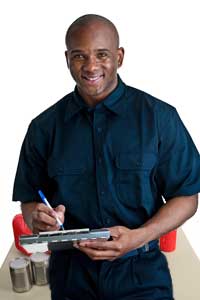Don't Get Caught in an Emergency. Create a Disaster Response Plan.
 September is National Disaster Preparedness Month—a time to get ready for disasters.
September is National Disaster Preparedness Month—a time to get ready for disasters.
We would like to help you do that! We’ve been breaking down some of the steps of preparing for, responding to and recovering from a disaster. If you have questions, or want to share your disaster planning experience, you can get in touch with us using your preferred mode of communication: phone, email, live chat, Tweet or Facebook comment.
Last week we wrote about emergency supplies and evacuations. Now we’re going to tell you how to create a disaster response plan.
Make that “plans.” You’re going to need a plan for each kind of emergency your organization might face.
Small-scale Disasters
Every single day, youth-serving organizations could find themselves dealing with one of the following:
- Building fire
- Power outage
- Water main break
- Gas leak
- Intruder
- Bomb Threat
- Collapse of roof or wall
- Medical emergencies (respiratory arrest, drug overdose, cardiac arrest, injury, illness)
Large-scale Disasters
If you’re in Florida, you probably worry about hurricanes. In California, you probably worry about earthquakes. From the list below, choose the types of disasters that could affect your entire region:
- Flood
- Earthquake
- Hurricane
- Volcano
- Thunderstorm and lightning
- Landslide
- Tornado
- Tsunami
- Blizzard
- Wildfire
- Hazardous material incident
- Chemical emergencies
- Nuclear power plant emergency
- Terrorist explosion
- Nuclear blast
- Biological threat
- Chemical threat
- Dirty bomb
Response Plan Template
Now that you’ve decided what disasters your organization might face, use our disaster response plan template to spell out the procedures you will follow for each type of emergency. On the template, you’ll also write down the supplies and contact numbers you need.
You can get an idea of the things you should include by reading our sample response plans for a tornado and a building fire.
More Information
Read the response chapter in our FREE disaster planning manual, “Ready for Anything.”
Stay tuned for more posts on disaster planning throughout September. And visit us on Facebook or Twitter to tell us about your disaster plans.


 Sign up
Sign up Follow us
Follow us Like us
Like us Sign up for our RSS feeds:
Sign up for our RSS feeds: 

